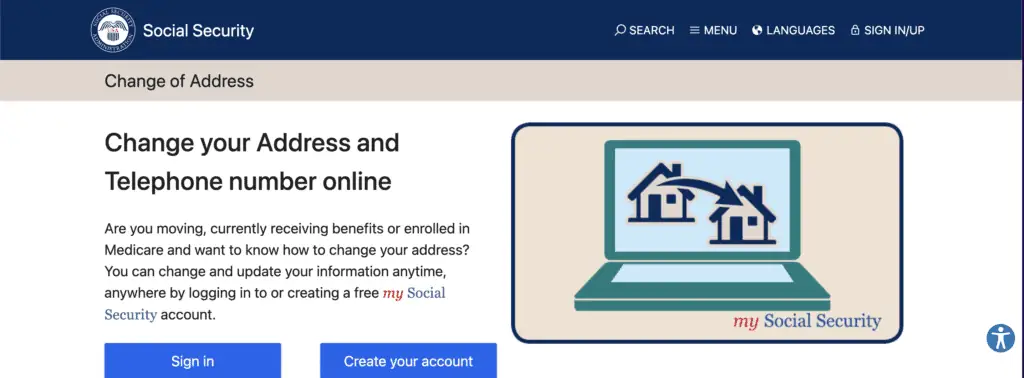If you’re reading this, let me start by saying congratulations! Your small business is outgrowing its space, and you’re thinking of moving to a bigger location.
Maybe your headcount is rising and you need more room and better facilities to accommodate your team. Or perhaps your products are flying off the shelves, and you need a larger space in a better location to meet increasing demand and manage more inventory.
With proper planning and help from the right people, you can move your small business into a bigger space and continue to grow for years to come.
Table of Contents
- Assess Whether You Need a Bigger Space
- Decided to Move? Create a Budget Plan First
- Find the Right Location for Your Business
- Plan the Layout and Design
- Stay Up-To-Date With the Legal and Regulatory Laws
- Get Your Employees Ready To Move
- Plan Out Each Step of Your Move
- Use Technology for a Seamless Transition
- Send Out Change of Address Notifications
Assess Whether You Need a Bigger Space
Before you start Googling “commercial space near me”, take some time to plan not just where you’re moving to but also why you need a bigger space. Some things to look out for include:
- Crowding: Does your team have enough space to work, or are your employees tripping over each other (or furniture and equipment)? A crowded workplace lowers employee satisfaction and poses a safety hazard.
- Lack of storage: Running out of storage space for inventory and supplies is a sure sign that your business is growing faster than your current space can handle.
- Inadequate facilities: Your space might have been perfect when you moved in, but if it now needs more restrooms or break rooms for employees, or if you have more people than desks, it no longer meets your team’s needs.
- Customer inconvenience: Long queues for fitting rooms in your retail space or wait times for tables in your café can lead to unhappy customers. You could also lose potential business if customers don’t want to stick around waiting for their turn!
If one of these problems feels familiar, it’s time to explore a move. Your reasons will guide what you need from your new business location.
Evaluate your business’s growth potential
Don’t wait until you’ve outgrown your current space to look for a new one. You’ll need time to find a new location and renovate it, so be proactive and start planning now to avoid disruptions to your business down the road.
“Since zoning licenses and building permits are attached to the physical space you operate from, you will need to get new ones for the space you’re moving into.”
Go through your business records and analyze how you project your business will expand over the next few years. If your space feels adequate today but you’re projecting increases to your staff or sales, you need a bigger space that can keep up with your growing business.
Decided To Move? Create a Budget and Financial Plan First
Look into all the potential costs you’ll incur to create a budget for the move before you find a new space.
- Leasing or purchasing the new space: Your existing monthly expenses will account for rent, but moving to a bigger space means this amount will likely increase. Don’t forget to factor in utilities and services in the new space, which may also be higher.
- Moving expenses: This includes the cost of packing supplies (like boxes, paper, and packing tape), moving insurance, and a moving company’s charges. If you need a temporary storage space during the transition, include this as well.
- Renovations: This includes everything: material, labor, furniture, upgrades for energy efficiency, and whatever else your specific business might need or add to the space
- Licenses and permits: You need to update your licenses and permits or apply for new ones when you move your business, and there may be fees associated with these changes
- Hiring experts: Whether you’re working with a contractor, interior designer, or legal expert, you need to include their fees as well
- Loss of revenue: Consider the cost of any lost income if your business will be closed during the move. If your employees can work remotely, they can use a co-working space to bring this number down — but remember to factor in the charges for the space
See prices for local moving labor. Read real customer reviews. Easily book your help online.
Explore your options for securing financing or grants
Dipping into your bank account to pay for these costs will impact your cash flow and financial goals. Fortunately, small businesses have other funding options to support their move and expansion without short-term financial stress.
- US Small Business Administration (SBA): The SBA helps small businesses secure loans from a variety of lenders. You might not be able to use the loan funds directly for moving costs or towards rent, but depending on the loan type, you could use it to purchase and install new machinery or equipment or to buy furniture and fixtures. You can also look into business equipment financing from other lenders for this purpose
- Business expansion loans: Many lenders offer business expansion loans that you can use to open a new business location
- Business line of credit: You can apply for a line of credit to secure some funding for immediate short-term needs
- Business grant: Many private companies and government agencies offer grants to small businesses. Unlike loans and lines of credit, you don’t have to repay a grant that’s awarded to you. Check the website of your state’s Department of Commerce for a list of grants and credit initiatives for small businesses
Find the Right Location For Your Business
Think about what your business needs
Setting up shop in the right location can make all the difference. When finding a new home for your business, think about aspects of the new area, such as the neighborhood and transportation, and how these factors will affect you.
- Zoning: Look at your city zoning maps or contact your local zoning office to see what types of business activities are permitted in the neighborhoods and buildings you’re exploring. Ensure that you’re allowed to operate in the new space as per zoning laws before you sign the lease
- Proximity to customers and target market: You risk losing a few customers when your business moves, but you don’t want to lose them all! Make sure your new location is close to where your target customers — existing and new — spend time, either at home or at work
- Proximity to suppliers: The relationships you build with your suppliers are crucial to your business running smoothly, so look into locations where you can continue to work with most of your current suppliers
- Accessibility: Think about all the people who need to access your business and how accessible the location is to them. Look into parking and public transport options for employees and customers to get to you without hassle. If you’re a retailer or in the food business, you also need to ensure convenience for loading and unloading goods and supplies and find a place with potential for foot traffic
If finding a new space that accommodates the needs of the business, your employees, and your customers is getting to be a headache, you might consider hiring a professional. A real estate broker can find a space that checks all the boxes and helps you assess the options for a commercial lease.
Plan the Layout and Design
Create a space that works for employees and customers alike
Moving into a bigger space gives you an opportunity to set it up to help your team work better together and make customers feel welcome.
- Workspace: Design your workspace for the future — this means not only considering what your team looks like today but also accounting for potential hires. This will give your business room to grow and hire new personnel without needing to move again quickly. Get feedback from your employees on what works well for them and what problems they’re facing so you can solve these when designing the new space.
- Customer-facing areas: You may have more space to create areas like receptions or showrooms. Make sure these spaces are warmly lit and have comfortable seating so customers will want to venture inside or spend time there. You should use those storage systems to keep this area clutter-free. Don’t forget to make spaces for your employees in these areas too!
Use business tools to plan for the furniture and equipment you’ll need
Before buying anything new, figure out what current furniture or equipment you may be able to bring with you to lower costs. Measure your current furniture and the floor space in your new location to gauge what will fit and what you need to donate or sell. You can also use a virtual staging app to visualize what the space will look like with furniture.
“Document management software gives your employees access to important documents at any time. This can be useful during a move when employees may work from home or a co-working space.”
Map out your electrical items — whether they’re as small as printers or as large as refrigerators — in your new layout so that the renovation crew can ensure there are enough electrical outlets nearby. Without this, you’ll have wires strewn on the floor, which aren’t just messy but are also a safety hazard.
Hire professionals
Look into working with a trustworthy contractor and/or interior designer to get your new space ready to move in. They can help you build a space that’s right for your business, coordinate with vendors and crew to get it ready on time, and (in the case of contractors) help with building permits.
Do your due diligence before hiring a professional to work with you. Look at their portfolios and references, and ask them questions about timelines, fees, and insurance. It’s okay to speak to a few people before finding one you’re comfortable with.
Stay Up-To-Date With the Legal and Regulatory Laws
Check the required permits, licenses, and registrations
Make a list of all the licenses and permits you currently have —zoning license, seller’s permit, employer registration, or anything else. This will be a good starting point to figure out whether you simply need to notify the relevant authorities of a change of address, or whether you need to apply for a new license or permit.
The requirements differ from state to state, so check the website for the authority that issued each license or permit to know the procedure.
Since zoning licenses and building permits are attached to the physical space you operate from, you will need to get new ones for the space you’re moving into.
- Zoning license: Local zoning laws determine the types of businesses that can operate in an area or a building. You’ll need to apply to your local zoning office or municipal planning department for a zoning license. This license confirms that your business complies with local zoning regulations.
- Building permit: You’ll need to apply to your local building department for this permit, which ensures that the new space (and its renovations) comply with safety and building code standards. If you’re working with a contractor, they should be able to help you with the building permit.
Also, look at your business insurance policy to see if you can transfer it to your new location or if you need to get a new policy.
See prices for local moving labor. Read real customer reviews. Easily book your help online.
Inform relevant agencies of your new address
You’ll need to notify multiple government agencies you’re registered with of your change of address.
- Internal Revenue Service: Submit Form 8822-B, which lets the IRS know your business has moved
- Relevant state departments: Check the websites for your state’s Secretary of State and the departments that oversee revenue and employment for procedures on notifying them about a change of business address
- City and county departments: Remember that list of licenses and permits you made? Check with the city or county department that issued each one about their requirements regarding a change of address notification.
Consult a legal expert
As you can see, there are a lot of steps to take to ensure your move is not only smooth but also legally compliant, and failure to comply can result in legal issues and fines. Consider consulting a legal expert to ensure compliance with all the relevant laws and regulations so you can move without worrying about running into trouble.
Get Your Employees Ready To Move
Communicate early and often
Moving to a new location doesn’t just impact your business, it also impacts your employees. They’ll have a new commute to figure out — the route, means of transport, and time it takes. Springing the move on them at the last minute will break their trust and reduce morale.
Let your employees know as early as possible once you decide to make the move, and explain both why you’re making the move and the impact it will have on the business. Prepare for questions they may have so you can ease their concerns. They might want to know:
- What does the parking situation or nearby public transportation look like?
- How will the new space affect the way they work?
- What will the procedure for the actual move be, and how will they be expected to participate?
- Will there be any downtime when the business is closed and they’re not paid?
If you don’t have an answer right away, note it down as a concern for employees so you can keep it in mind when making decisions. Ask your employees for feedback during the planning stages and give them opportunities to ask questions. It’s a win-win: you’ll get first-hand knowledge about their concerns and how to solve them, and your employees will know they’re being heard.
Once you’ve chosen a location, help them get familiar with the neighborhood. You can organize lunches or give employees gift cards to local businesses that encourage them to explore the area.
Plan Out Each Step of Your Move
Create a detailed moving plan
Checklists are your friend for managing a move. Create a detailed checklist with all the tasks required for the move, and break it down into phases including pre-move preparations, moving day, and setting up in the new space.
You should also delegate specific tasks from your checklist to your employees and share the list with everyone. This way, each person knows what they’re responsible for and whom to approach if they have questions. Set timelines for each task to keep everything on track.
Here are some things to include:
- Packing: Items should be properly packed to prevent damage during transport. Label items and boxes with the room or area they should go in to make it easier when unpacking.
- Moving day specifics: Things like if you’re on the second floor or higher in either space, do you need to make a formal request to use service elevators?
- Utilities and services: Your business phone, internet, and security system should be set up in the new space (and disconnected when you move out of the current space).
- Communication: Let suppliers and customers know about the move and share it on your social media and website.
- Moving out: Ensure nothing is left behind and all keys or access cards are returned to the landlord or deactivated.
- Backup data: Make sure to backup all important data to a hard drive or cloud backup system.
Consider hiring professional movers
Professional movers have the expertise and equipment needed to move your large and heavy items safely and efficiently. Coordinate transportation with the moving company well before moving day and let them know about any restrictions regarding hours during which you can move in either location.
Use Technology for a Seamless Transition
Implement management software
It’s not easy to keep track of who has what information if you communicate verbally. Or where in the world are your equipment and furniture during the move. Using software to manage it all will keep everyone on the same page about deadlines and progress.
“Ask your employees for feedback during the planning stages and give them opportunities to ask questions. It’s a win-win: you’ll get first-hand knowledge about their concerns and how to solve them, and your employees will know they’re being heard.”
Look into project management software like Asana, Monday.com, and ClickUp, and assign moving tasks and timelines to your employees from one of these apps. You can use this both for coordinating the actual move and for ensuring that work doesn’t slip through the cracks during the transition.
For inventory management, explore options like Zoho and Square.
Audit current technology and equipment
Moving your business is a great time to evaluate your technology and whether you need to upgrade to newer, more efficient systems. Cloud-based software and smart technologies offer a range of benefits that can boost your business even after the move is complete.
- Document management software gives your employees access to important documents at any time. This can be useful during a move when employees may work from home or a co-working space.
- Cloud-based software reduces the need for on-premises servers and IT infrastructure, maintenance, and the associated energy consumption. This can make future operations more cost-effective.
- They often have strong security measures that keep your data safe. Requiring two-factor authorization for employees to access any software adds another layer of security to your data.
- They’re scalable and can grow with your business as your needs evolve.
See prices for local moving labor. Read real customer reviews. Easily book your help online.
Send Out Change of Address Notifications
Update marketing materials
With so much to do on the ground, you might overlook all the places online where you need to update your business address. Assign this task to an employee for Day 1 in the new space, and ensure they update your address on any place you have an online presence, including:
- Social media accounts
- Website
- Email signatures (including your newsletter)
- Google Maps
- Google My Business listing
- Yelp, OpenTable, Tripadvisor etc.
Don’t forget to order your new letterheads, envelopes, return labels, and business cards in advance too, and arrange to add your business name to the lobby in your new building.
Sign up for mail forwarding
Even if you’ve already notified the relevant government authorities, suppliers, and your business bank about the change of address, you may get mail at your old address for a while. Arrange with the United States Postal Service to have your mail forwarded to your new address until you’re sure it’s updated everywhere.
Enjoy the Milestone
Take some time to celebrate with your team and thank them for their hard work when you’re settled in. Moving to a bigger space is a sign of your success and a milestone for everyone to be proud of.










 As far as the financial toll is concerned, moving scams average the most financial damage in
As far as the financial toll is concerned, moving scams average the most financial damage in 







